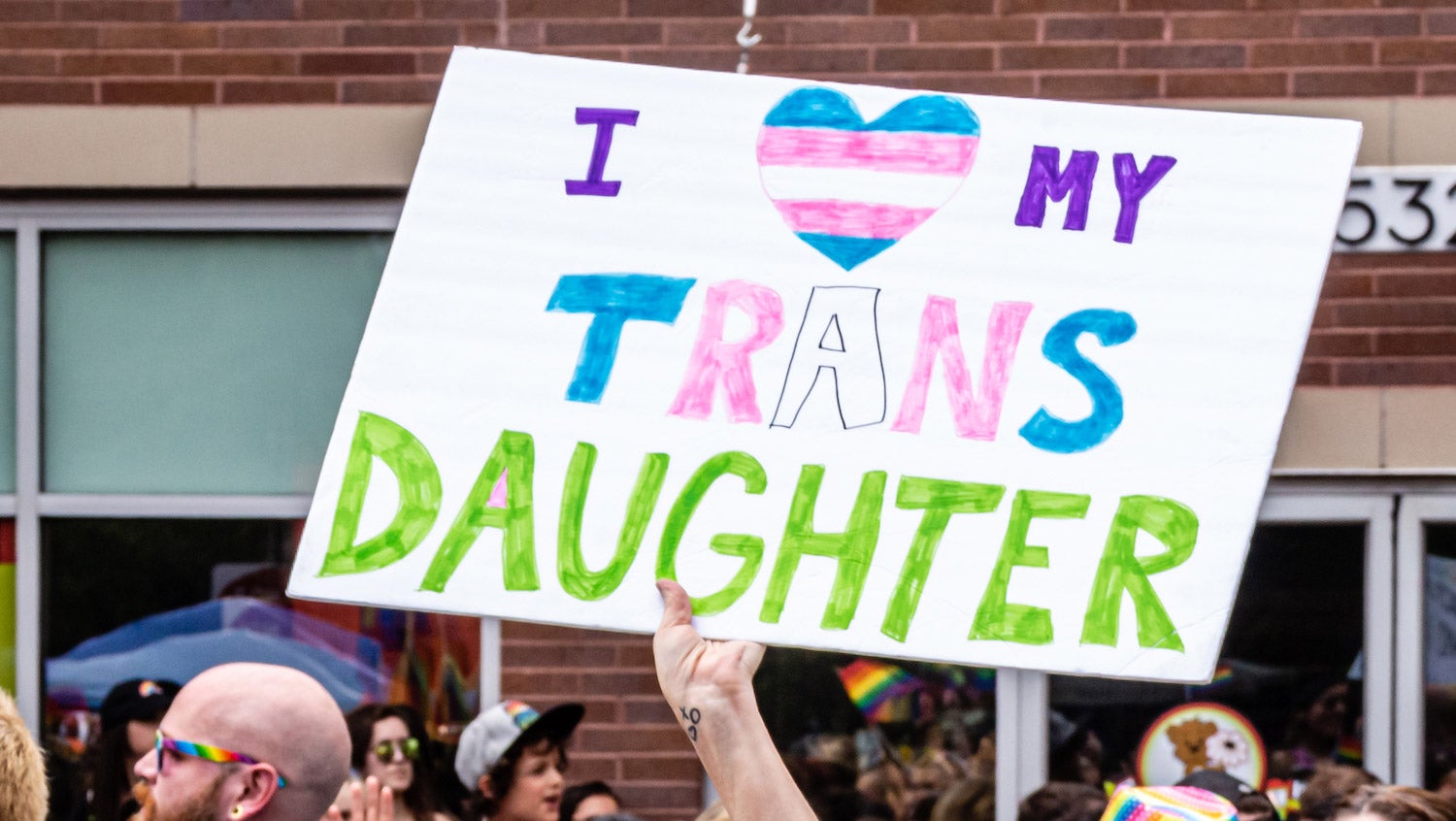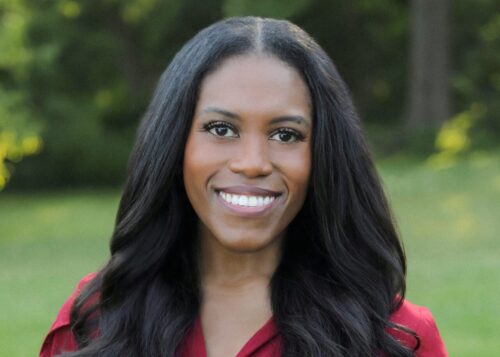For Kids and Teens Exploring Gender Identity, Family Engagement in Care Is Critical
August 22, 2019
By Amanda Doyle

Getty Images
An innovative model of pediatric gender care combines social work and medical care to engage family, which can lead to better outcomes for gender diverse youth.
The medical profession’s understanding of gender exploration has gone through a rapid transformation in just the past several years. Originally classified as a pathology, gender exploration has moved through a series of labels including the DSM-recognized “gender identity disorder,” the less-stigmatizing “gender dysphoria” and, more recently, the providers’ preference for the term “gender affirming care.” This evolution reflects the medical community’s growing acceptance of trans and nonbinary identities — and also a recognition of the impact of not affirming people’s gender identities on their mental health, especially during adolescence.
Trans and nonbinary youth face higher rates of depression and anxiety than their cisgender counterparts and have alarmingly high rates of attempted suicide. For transgender male teens, the rate soars up to 50%, while the rate for cisgender male teens hovers at 9%, according to a study in Pediatrics.
But a landmark study from 2016 found that mental health outcomes are comparable between cisgender youth and gender diverse youth when their identities are supported by their loved ones, suggesting that mental health problems can be mitigated or prevented by creating a supportive environment at home and at school.
Despite the evidence pointing to family support as a key protective factor, many providers of gender affirming care have been slow to engage families and provide all aspects of care. Psychological evaluations, medical consults, and additional evaluations and family counseling sessions tend to be broken up into separate appointments, which not only causes additional stress due to the number of appointments, but limits opportunity for important family conversations and takes up crucial time for youth approaching or experiencing puberty in a gender that is distressing for them.
As our understanding of trans and nonbinary youth and their outcomes evolves, medical providers must also evolve their practice to address these patients in a holistic way, says Mandy Coles, MD, MPH, the medical director of the Child and Adolescent Transgender Center for Health (CATCH), a program within the department of pediatrics at Boston Medical Center.
“Gender care is about providing social support and facilitating social transition as much as it is about facilitating medical transition when and where appropriate,” she says.
In gender care, social aspects need the most support
At CATCH, gender affirming care encompasses a range of interventions and supports that help a patient live fully in their gender identity, from hormone blockers or hormone replacement therapies to referrals for voice training or surgical services that bring phenotypic alignment with the person’s identity. However, CATCH clinicians also prioritize social supports alongside medical care, particularly to encourage important family engagement.
“If you have a patient coming in with asthma, the discussion with the family is not about whether they accept the asthma’s validity,” explains Coles. “When you’re talking about gender, the challenging part is figuring out how to facilitate communication so that patients and families are aligned.”
Lack of parental support can be a barrier for children and adolescents seeking medical care for gender issues. Unlike mental health care, substance use treatment, or even birth control, where clinicians can often provide services with a minor patient’s consent, parental consent is required to initiate some aspects of gender care, like hormone therapy.
Mental health outcomes are comparable between cisgender youth and gender diverse youth when their identities are supported by their loved ones.
That consent doesn’t always come easy, says Erin Peterson, LICSW, who partners with Coles as the co-director of CATCH. “With a lot of gender issues, there’s a grieving process. Even when parents are completely supportive, they may need to mourn the loss of the child they thought they had,” says Peterson.
Because of parents’ own barriers to accepting and affirming a change in gender identity, family engagement is a baked-in part of the process in the CATCH clinic. While a child may have been processing their gender internally for many years, it’s often not the case for the rest of the family when they present to care. In these instances, care becomes as much about the family’s coping and goals as it does the child’s.
“We tell patients, you have your own coming out process, and your family is going to have theirs too,” says Coles. “And that takes time. Time is probably one of the biggest facilitators of acceptance.”
Supporting families to support their children
Education and peer support for parents are critical. Often, parents’ apprehension around gender affirmation comes down to well-intentioned but misinformed concern for their child. While children may have already done plenty of research on treatment options, parents may not know where to begin or what information to trust.
Clinicians within CATCH address gaps in understanding among family members by making sure they have all the information they need and that they are connected to additional supports. CATCH partners with OUT MetroWest and Boston GLASS, which offer identity-affirming community for LGBTQ+ youth, as well as Greater Boston PFLAG, who run parent support groups in the area. The team also facilitates one-to-one connections with other parents who have a child of similar age going through similar things.
“We can provide medical information and we can cite the research, but sometimes parents just need to talk to another parent who was going through it,” says Peterson. “Often, that’s actually the thing that makes the difference.”
Back at the clinic, visits involve conversations about individual and family goals, which may center around medical goals, but just as often revolve around what name and pronouns are being used at home or what bathroom is being used at school. Coles notes that many clinicians want to jump to medical conversations, such as those around the impact of treatment on fertility, but in reality, families may not be on that page yet.
“We want to make sure that we’re not creating any hoops that people need to jump through,” says Coles, explaining that her primary goal within CATCH is to listen to what’s important to the family and to withhold assumptions about what care may be needed. Together, clinicians and families work on the acceptance of the patient’s lived experience and how to support that outside of the clinic room, so all of their spaces are gender affirming, in a way that works best for the family.
Allies, advocates, and empowerment
Family doesn’t stop with the parents. Sometimes siblings can be the best advocates for patients, says Coles, who finds that younger people are generally more accepting of gender transition or exploration, making them valuable allies to patients for whom correcting pronouns and deadnames can become a heavy emotional burden.
Still, self-advocacy is an important area of collaboration for clinicians and patients. The CATCH team makes space for conversations about the lived experience of gender dysphoria because those conversations are often what move parents most, says Coles. Understanding the scope of pain their child may be feeling when they’re not able to live authentically can strike a chord that medical data cannot. Parents often come to a similar breakthrough: I have to take care of my child now — the child in front of me — or else I might not have a child to take care of in the future.
“The bottom line is, we have to continue to engage family, especially family members or parents who aren’t necessarily supportive — because that’s the only way we can help kids move forward,” says Peterson.


